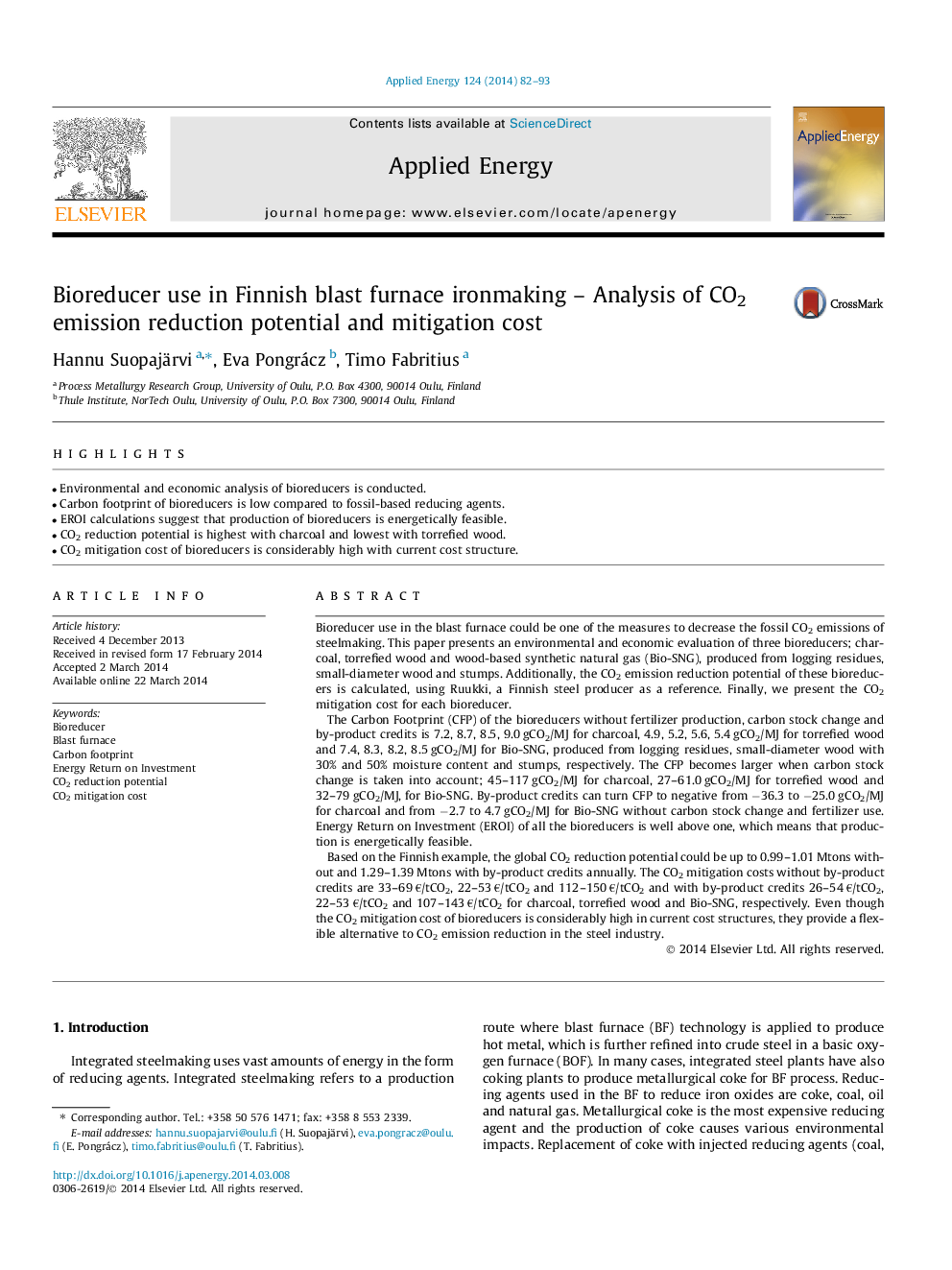| کد مقاله | کد نشریه | سال انتشار | مقاله انگلیسی | نسخه تمام متن |
|---|---|---|---|---|
| 242816 | 501903 | 2014 | 12 صفحه PDF | دانلود رایگان |

• Environmental and economic analysis of bioreducers is conducted.
• Carbon footprint of bioreducers is low compared to fossil-based reducing agents.
• EROI calculations suggest that production of bioreducers is energetically feasible.
• CO2 reduction potential is highest with charcoal and lowest with torrefied wood.
• CO2 mitigation cost of bioreducers is considerably high with current cost structure.
Bioreducer use in the blast furnace could be one of the measures to decrease the fossil CO2 emissions of steelmaking. This paper presents an environmental and economic evaluation of three bioreducers; charcoal, torrefied wood and wood-based synthetic natural gas (Bio-SNG), produced from logging residues, small-diameter wood and stumps. Additionally, the CO2 emission reduction potential of these bioreducers is calculated, using Ruukki, a Finnish steel producer as a reference. Finally, we present the CO2 mitigation cost for each bioreducer.The Carbon Footprint (CFP) of the bioreducers without fertilizer production, carbon stock change and by-product credits is 7.2, 8.7, 8.5, 9.0 gCO2/MJ for charcoal, 4.9, 5.2, 5.6, 5.4 gCO2/MJ for torrefied wood and 7.4, 8.3, 8.2, 8.5 gCO2/MJ for Bio-SNG, produced from logging residues, small-diameter wood with 30% and 50% moisture content and stumps, respectively. The CFP becomes larger when carbon stock change is taken into account; 45–117 gCO2/MJ for charcoal, 27–61.0 gCO2/MJ for torrefied wood and 32–79 gCO2/MJ, for Bio-SNG. By-product credits can turn CFP to negative from −36.3 to −25.0 gCO2/MJ for charcoal and from −2.7 to 4.7 gCO2/MJ for Bio-SNG without carbon stock change and fertilizer use. Energy Return on Investment (EROI) of all the bioreducers is well above one, which means that production is energetically feasible.Based on the Finnish example, the global CO2 reduction potential could be up to 0.99–1.01 Mtons without and 1.29–1.39 Mtons with by-product credits annually. The CO2 mitigation costs without by-product credits are 33–69 €/tCO2, 22–53 €/tCO2 and 112–150 €/tCO2 and with by-product credits 26–54 €/tCO2, 22–53 €/tCO2 and 107–143 €/tCO2 for charcoal, torrefied wood and Bio-SNG, respectively. Even though the CO2 mitigation cost of bioreducers is considerably high in current cost structures, they provide a flexible alternative to CO2 emission reduction in the steel industry.
Journal: Applied Energy - Volume 124, 1 July 2014, Pages 82–93